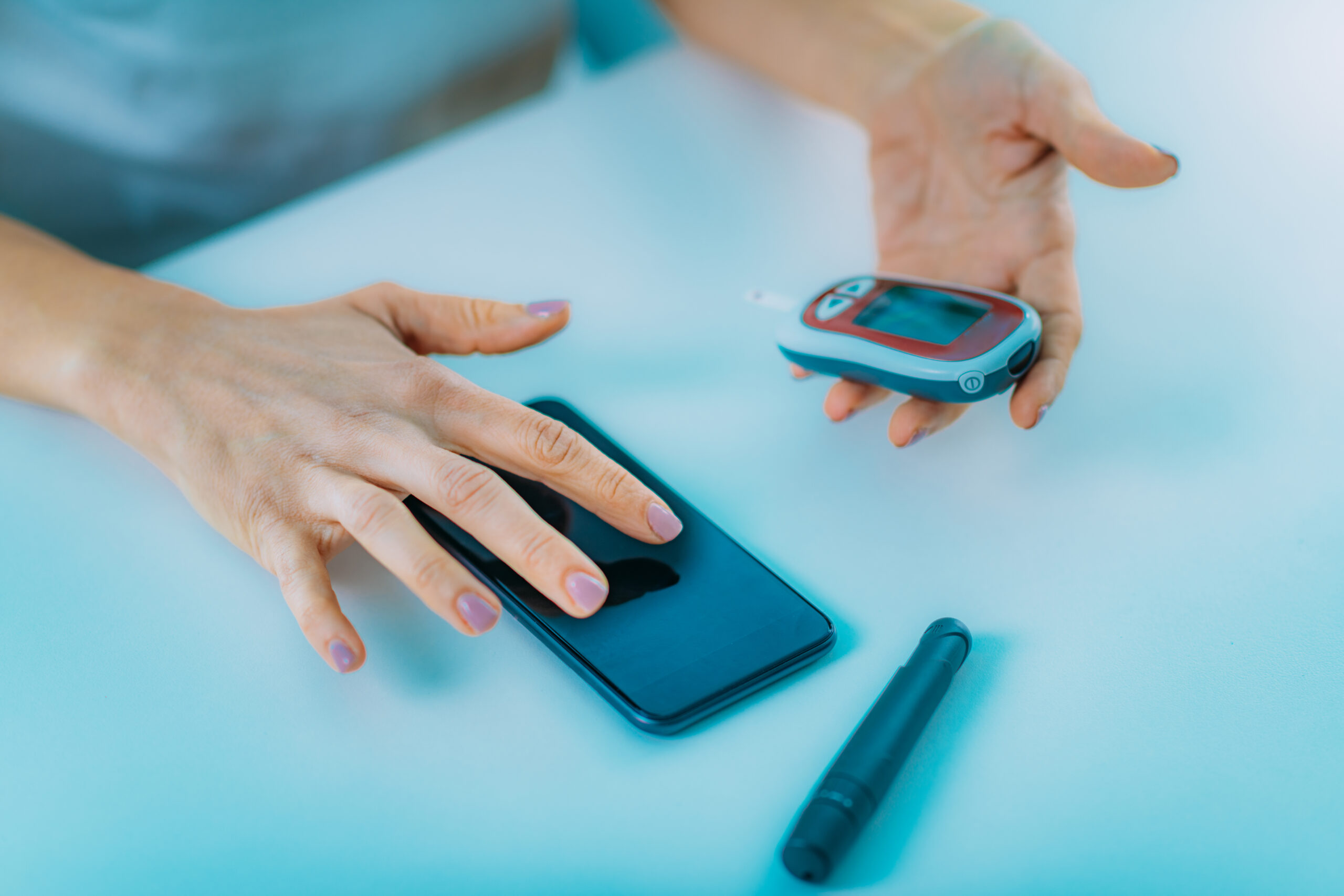
Continuous glucose monitors offer a whole host of benefits for those who are dependent on insulin administration. The constant monitoring of blood glucose levels could be a game-changer for millions of those with diabetes across the country. The cost, however, is a very important hurdle to cross when considering the switch to a continuous glucose monitor. How much does continuous glucose monitoring cost?
This article breaks down the cost of popular continuous glucose monitors and offers tips on how to afford the switch.
A continuous glucose monitor (CGM) is a wearable device used to track blood glucose levels in real-time.
This continuous glucose monitor system uses a disposable sensor that is worn under the skin, often on the stomach or the arm. The current sensor options can be worn for 6-14 days. Every few minutes sensors test blood glucose levels and transmit this real-time data to a transmitter.
The readings are displayed on a monitor and can be integrated with a smartphone. Alarms can be set to sound if blood sugar levels dip into hypoglycemia or climb into hyperglycemia.
This technology offers an alternative way of managing insulin for diabetics. Often, those with type 1 diabetes could be pricking fingertips 8-12 times a day. This can be rough on the fingers and only offers limited trending data.
Continuous glucose monitors, as well as any other type of medical device, has its upsides and downsides.
Those who have worn this device have said the best thing about CGMs is the freedom and peace of mind they feel.
A continuous glucose monitor can alarm when sugar levels are trending in the wrong direction. For active people, a CGM can give them a full picture of their blood glucose without stopping to prick their fingers.
Because a continuous glucose monitor is constantly monitoring blood sugar levels, the data that is collected is extremely useful to both the person wearing it and their physician.
While a glucometer gives a momentary snapshot of the current blood sugar level, a CGM can offer the full story; offering data that shares trends that can associate with activities or food.
Those who deal with hypoglycemia unawareness could benefit from continuous monitor to help avoid hypoglycemic complications. Using a continuous glucose monitor during sleep could help those who would not have a reading otherwise.
This also offers peace of mind of not having to set a 3 am alarm to check blood sugar levels.
This monitoring system is not particularly cheap. In Canada, there are private insurance plans that offer coverage for a continuous glucose monitor. However, even with insurance coverage, there is often out-of-pocket expense. Some insurance plans in Canada do not have CGM coverage.
This compounded with the fact that you’d still need to purchase insulin, insulin delivery systems and glucometer test strips could be a deal-breaker for those on a budget.
When using a continuous glucose monitor, there is still a need to use finger prick test strips to calibrate the monitor. This is often done after waking up, and before going to sleep.
While this is a significant drop in finger pricking, there is still a need to purchase and use this other blood sugar monitoring system.
The big question: how much does continuous glucose monitoring cost? Depending on the manufacturer, a continuous glucose monitor can cost anywhere between $3,000 to $6,000 a year in Canada. This is not considering the cost of insulin or an insulin delivery system.
This is a steep price tag for many people.
According to the popular CGM manufacturer Dexcom, a CGM transmitter is $289 while a single CGM sensor, which can be worn up to 10 days, is $100.
There is an optional CGM receiver that is used as a way to display readings that runs about $499.00. (This is optional as a smartphone is often used as a receiver.)
Here are a few tips to afford a continuous glucose monitor.
○ There is CGM public funding available for those who have access to the Ontario Disability Support Program or the Non-Insured Health Benefits program for First Nations and Inuit.
○ If you’re insulin-dependent, you could be eligible to attain The Disability Tax Credit (DTC) and qualify for retroactive tax reimbursement for every year they’ve lived with a qualifying therapy need. This could help you sustainably afford or offset the cost of a continuous glucose monitor system as you could recover up to $40,000 from the CRA.
○ There are subscription programs that offer small discounts to those who subscribe to a regular delivery of CGM supplies.
○ Select Costco Pharmacies in Canada are now carrying continuous glucose monitor supplies at discount prices.
To answer this you have to consider the benefits of a CGM system alongside your unique needs and lifestyle habits.
Here are a few types of situations that a CGM might be a good option:
True North Disability Services works with thousands of insulin-dependent people every year to help them attain tax credits due to their life-sustaining therapy uses. The Disability Tax Credit (DTC) allows Canadians who qualify to significantly reduce the taxes they pay and may qualify for retroactive reimbursement for every year they’ve lived with a qualifying impairment.
If you’re a Canadian diabetic who is insulin-dependent you may be eligible for a large tax refund from the Canada Revenue Agency (CRA) through the Disability Tax Credit Program.
This refund and tax credit could help offset the cost of a continuous glucose monitor. If you’re interested to learn more, contact True North Disability Services today at no cost to you.